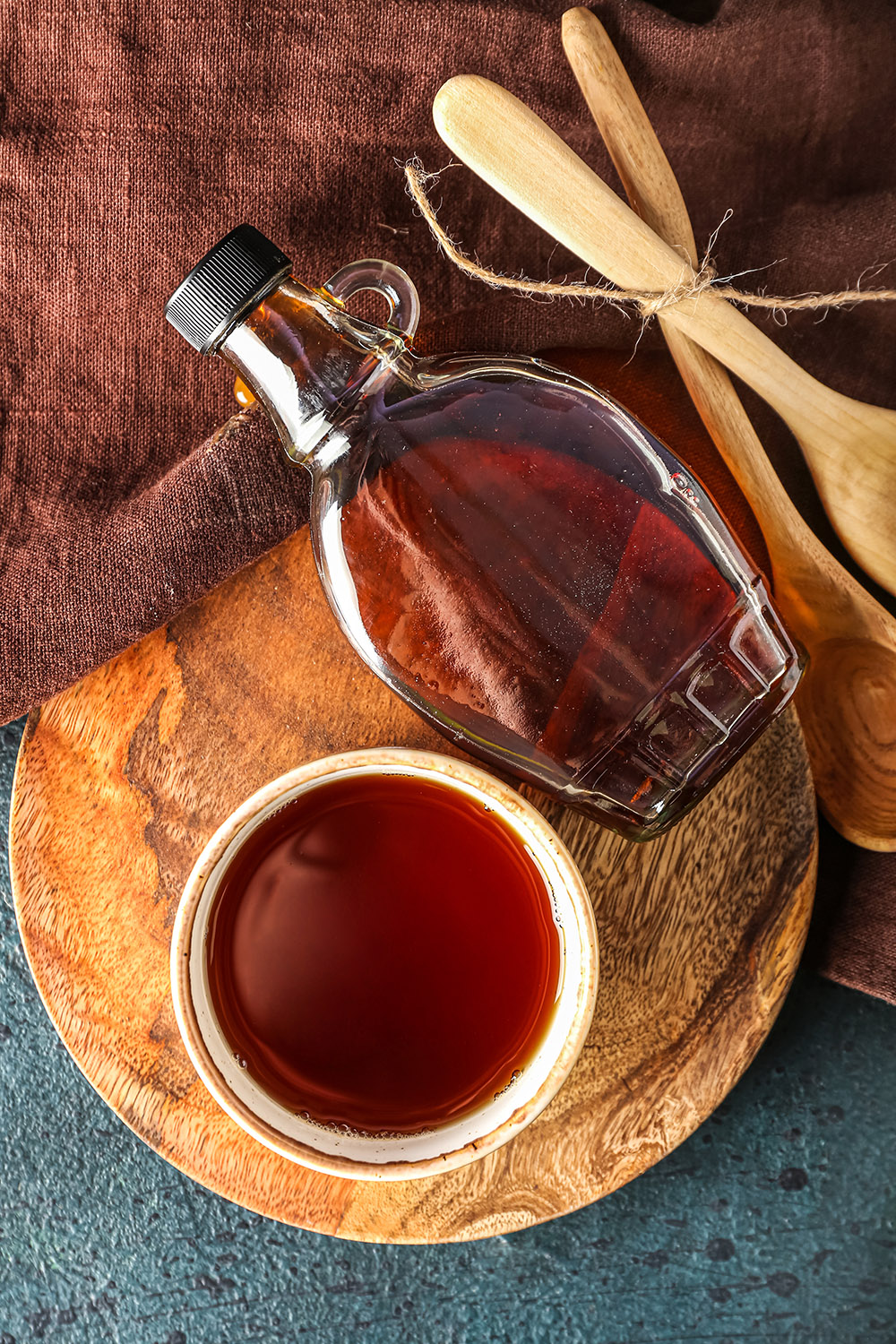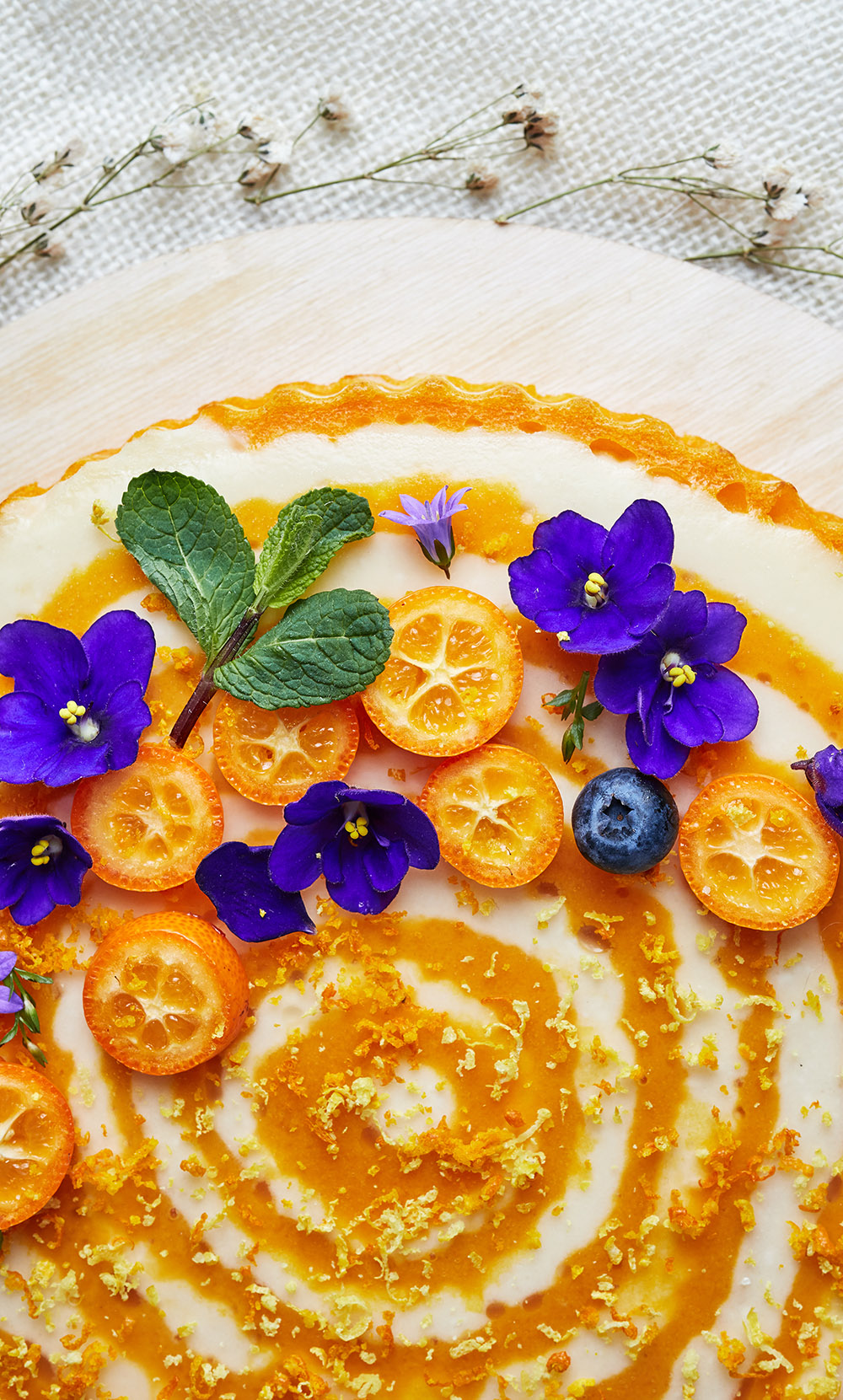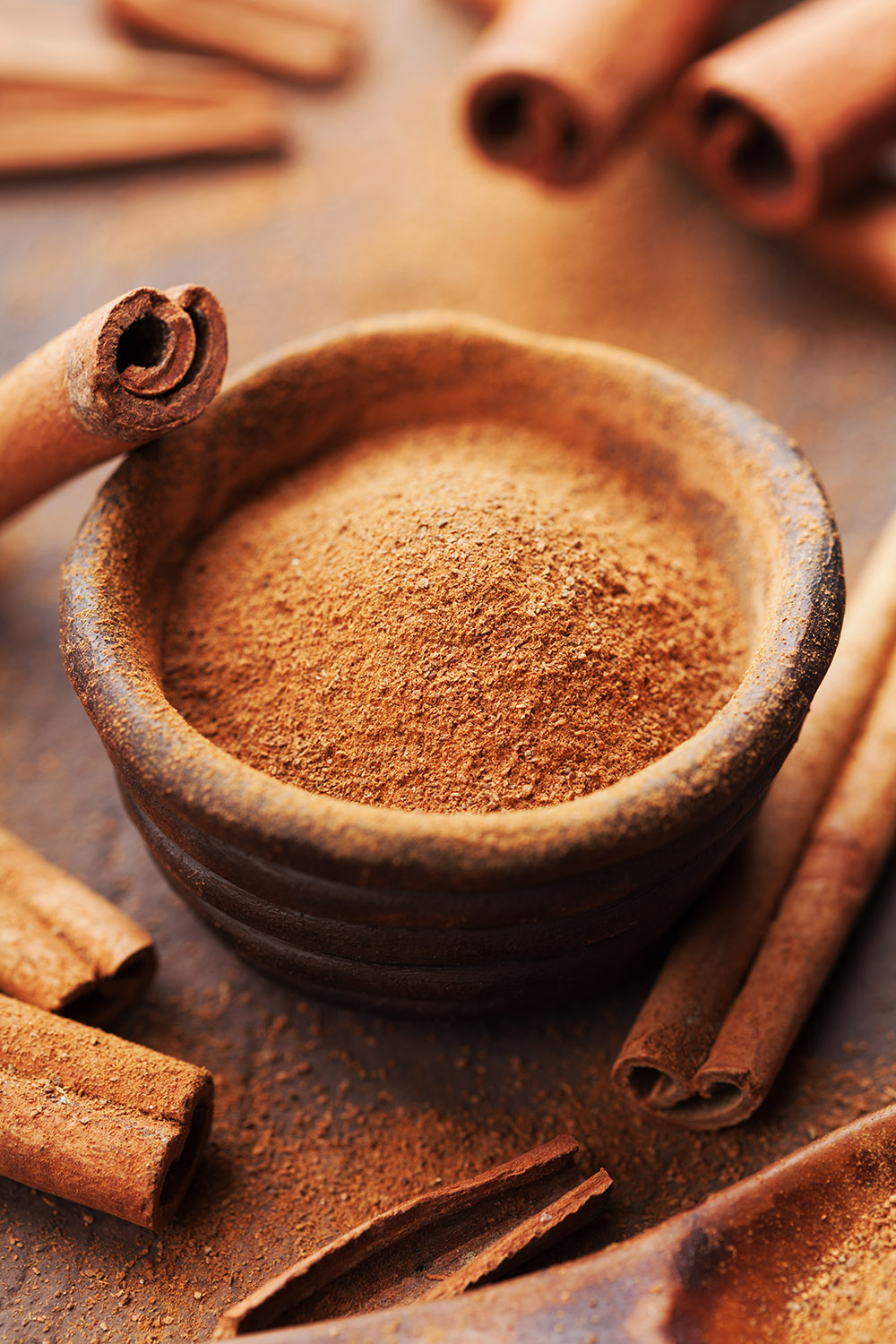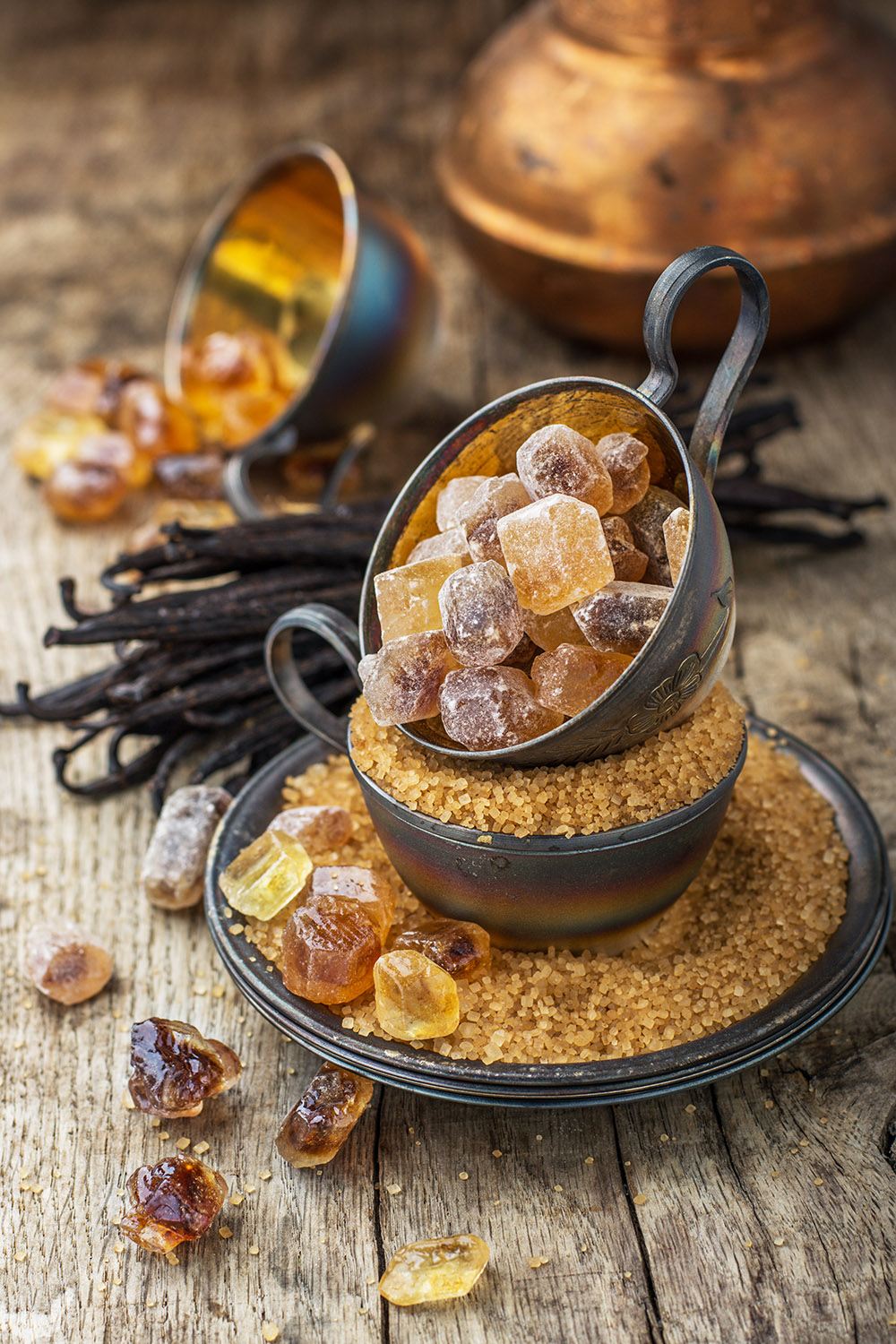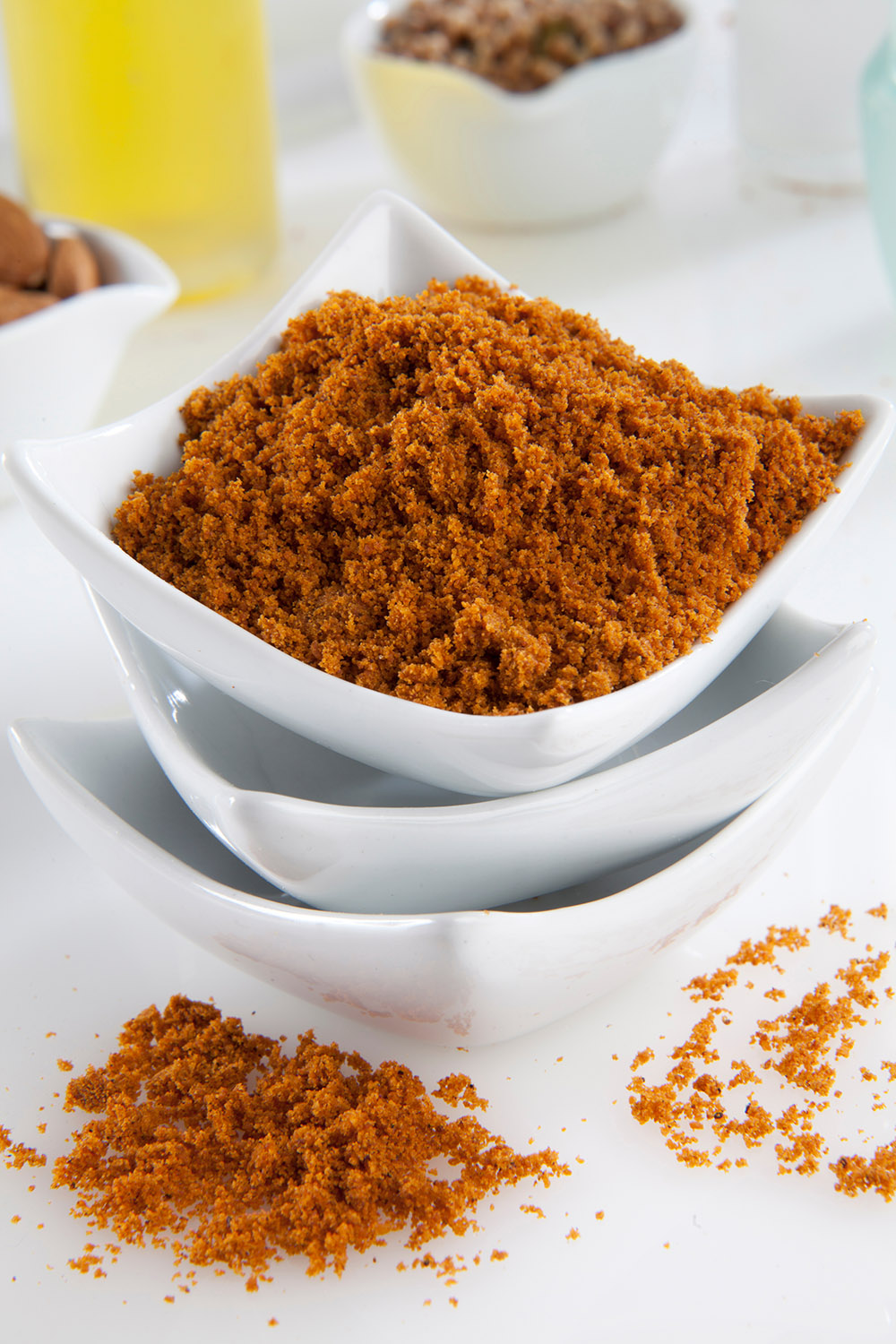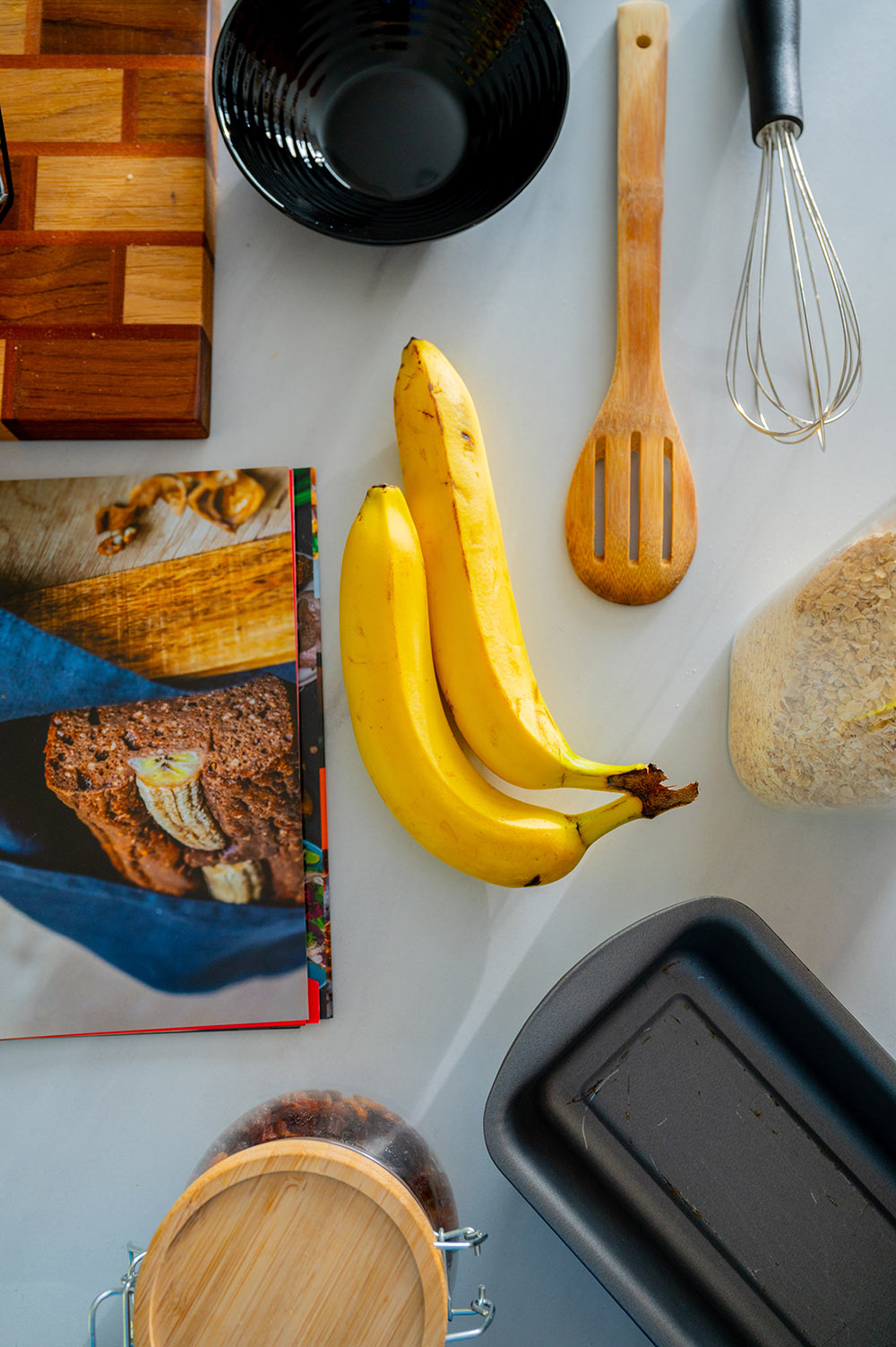Even the most prepared home baker can sometimes find themselves fresh out of a key ingredient mid-recipe. Or maybe you or someone in your family has an allergy that suddenly makes cinnamon off-limits. Whatever the reason, running out of this warm, cozy spice doesn’t have to derail your baking plans.
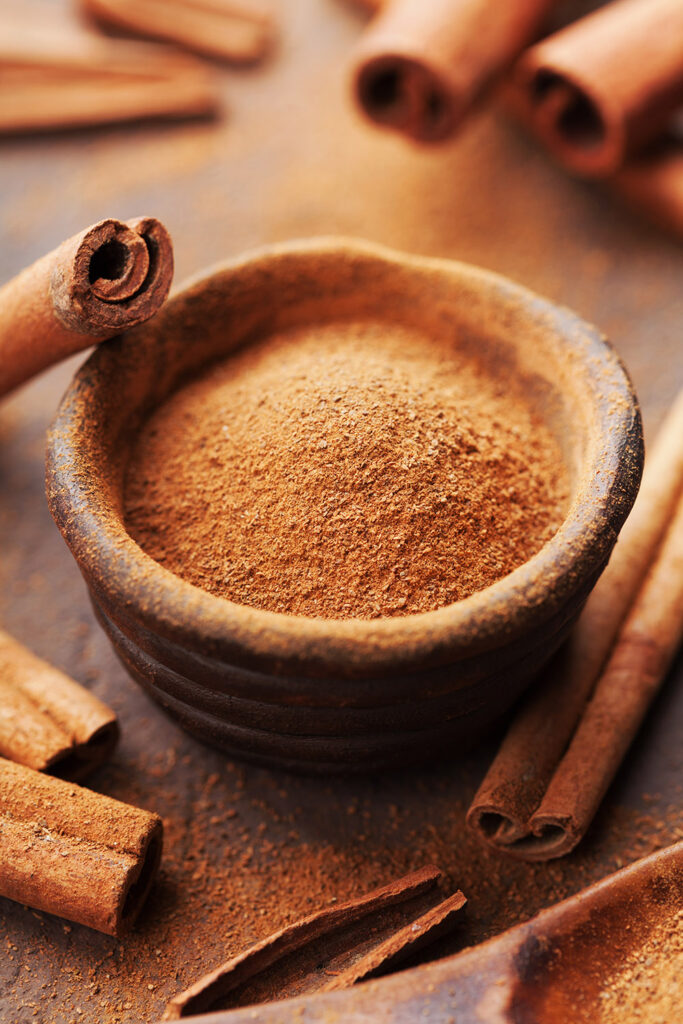
There are plenty of clever cinnamon alternatives. Keep reading to learn how to improvise and nail that irreplaceable kick quickly!
In This Article:
What is Cinnamon?
Cinnamon comes from the inner bark of trees in South and Southeast Asia. We usually see cinnamon in our pantries in sticks or silky, freshly ground powder.
During the fall and winter months, I go through cinnamon like it’s going out of style. For pie, crisps, bread, cookies, and so on, cinnamon is likely making an appearance. It’s such an iconic seasoning for all those holiday goodies that I crave when the weather turns cool.
Cinnamon isn’t just delicious with a comforting aroma. It also has some health benefits, like anti-inflammatory properties and the ability to regulate blood sugar.
What Does Cinnamon Taste Like?
Also known as the “queen of spices”, it’s a complex and versatile warming spice. If I had to describe the taste of cinnamon, it has a warm, slightly spicy burst that dances on the palate.
But here’s where it gets interesting. Behind this initial warmth lies a subtly sweet note with hints of earthy, woody flavors. It’s this unique balance that makes cinnamon such an indispensable spice in baking.
This spice can do more than just flavor your treats. Adding a sprinkle of cinnamon in sweet dishes allows you to cut down on the sugar. This little trick often helps me balance sugar levels in my recipes, making them a tad healthier without compromising the taste.
However, like all good things, this fragrant spice comes with a caution tag. Use it in moderation. In high concentrations, cinnamon can turn from a delightful spice to a bitter, overpowering presence. Worse still, overdoing it could make your lovely, fluffy cake feel a bit chalky or gritty.
Can I Use Cinnamon Sticks Instead of Ground Cinnamon?
100% yes! You can use cinnamon sticks to make your own ground version for baking. In fact, it’s one of my go-to moves when I realize I’m fresh out of the pre-ground stuff.
If you’ve got a coffee grinder or a high-speed blender on hand, toss a few sticks in there and give it a whirl. Just pulse it a few times until you get a fine powder. Don’t go overboard with the blending, though, or you’ll end up “cooking” the cinnamon and changing its flavor.
If you don’t have either of those appliances, no biggie. Grab a small zester and get to grating those sticks. This works like a charm if you just need a light dusting of ground cinnamon to top something like a cake or pudding. Trying to grate enough for an entire recipe can get pretty tedious.
Another option is to put your cinnamon sticks into a plastic zip-top bag and go to town on them with something heavy like a meat mallet or rolling pin. The sticks will break down into more of a coarse powder this way compared to grinding. But it definitely can get the job done when there is no other option.
The other way around is also true (meaning you can use ground as a cinnamon stick substitute).
Best Substitutes for Cinnamon in Baking
1. Nutmeg
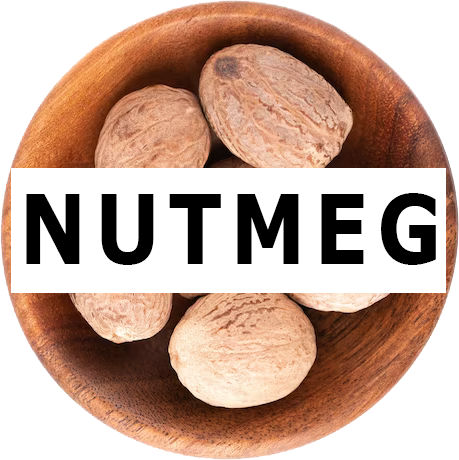
It comes from the seed of an evergreen tree native to places like Indonesia and the West Indies.
While nutmeg has a stronger nutty flavor than cinnamon, it shares that same earthy, warming quality. The flavors are distinct but complementary enough that nutmeg can work as a replacement in recipes like coffee cakes or cinnamon swirl bread.
That said, nutmeg packs a pretty potent punch. Its flavor can be a bit much if you use the full amount of nutmeg for cinnamon. I’d recommend scaling it back to half or even a quarter of what your recipe calls for in cinnamon.
One note – ground nutmeg works beautifully, but the whole nutmeg won’t really sub in the same way for cinnamon sticks. For those, you’re better off trying one of the other options.
2. Cloves
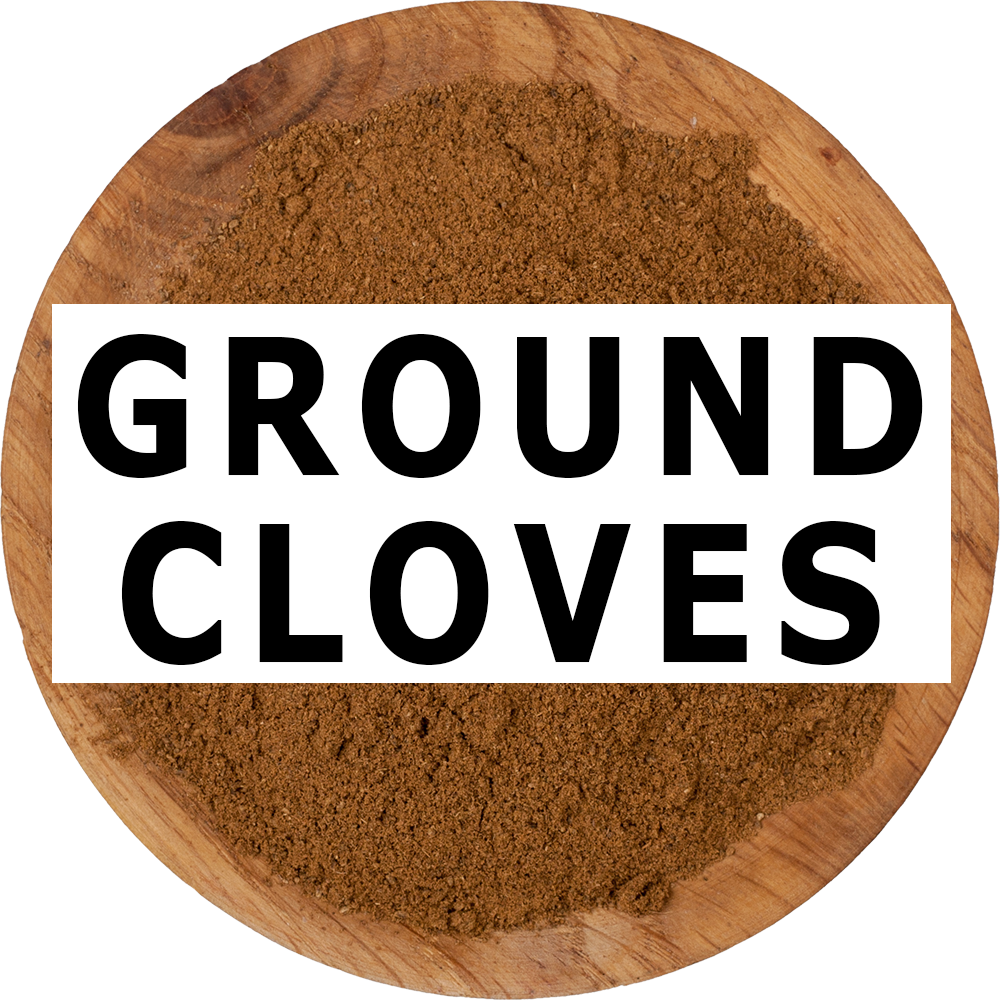
These little dried flower buds might seem like an odd alternative to cinnamon at first. But clove and cinnamon are actually two peas in a spicy pod. They’re warming spice cousins that show up together all the time in baked goods.
Cloves originate from the tropical Maluku islands of Indonesia. Their intense aroma and almost numbing astringency give them a different punch than cinnamon’s gentle heat. Cloves’ flavor is sweet yet slightly bitter, which is why they’re usually paired with other baking spices like ginger and nutmeg to round them out.
Cloves are so robustly flavored that you’ll want to use about half as much ground clove as you would ground cinnamon. Any more, and that bitterness can easily overpower everything.
I love this substitute in citrus recipes like orange cinnamon muffins or cranberry bread. The bright fruitiness plays so nicely against the clove’s richness.
Don’t go overboard if you need to sub whole cloves for cinnamon sticks. Opt for about 1 teaspoon of cloves for every 1 cinnamon stick listed.
3. Cardamom
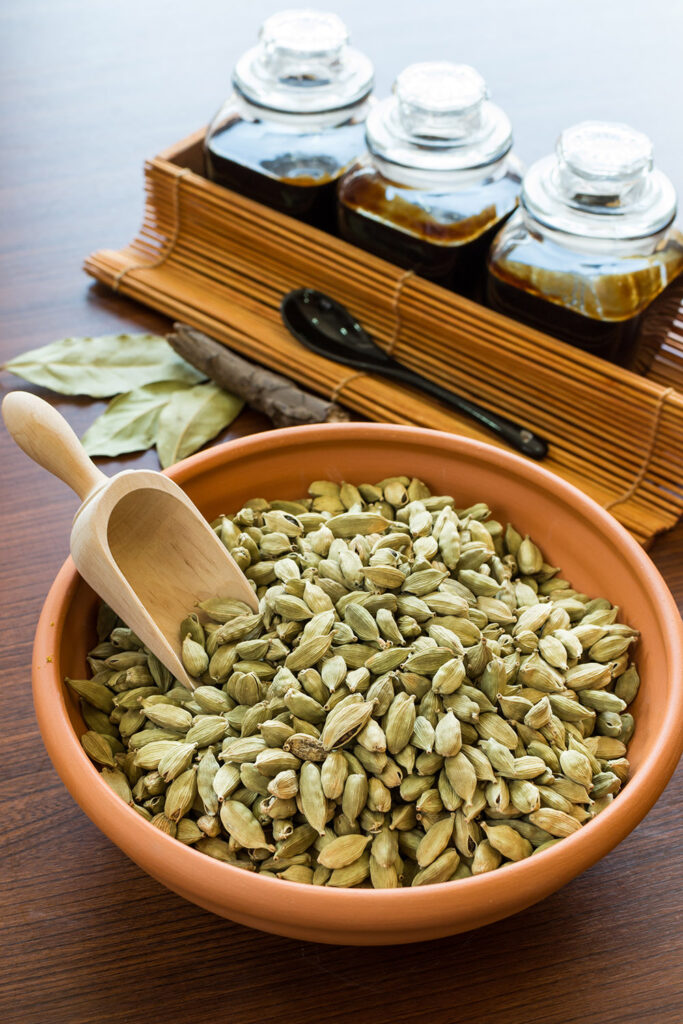
This one’s a bit of a wild card replacement for cinnamon, but hear me out. Cardamom has this incredible complex flavor that’s citrusy yet minty yet spicy all at once. It doesn’t taste like cinnamon, but it can provide a similar warmth and aroma in certain baked goods.
The deeply sweet, resinous notes make it a fun stand-in for cinnamon in things like cookies, cakes, and dessert recipes. You can do a straight 1:1 substitute ratio. Just keep in mind that bright, almost menthol-y cardamom flavor is going to shine through more than you may expect.
4. Allspice
Despite its name, this popular spice isn’t actually a blend. It’s the dried, unripe berry of a certain type of tree. This spice gets its moniker because its flavor is a unique melding of nutmeg, clove, and cinnamon notes all in one.
Allspice does pack a pretty potent punch, though. So, when using it as a cinnamon substitute, you’ll want to use just ¼ to ⅓ of the amount called for. Any more and that intense flavor can easily overpower the dish.
The flavor leans a bit more toward the clove/nutmeg side of things. If you want to change that, use just a little first, then round it out with other warm spices like ginger or nutmeg to better mimic that cinnamon taste.
5. Pumpkin Pie Spice
This pre-mixed seasoning combines cinnamon with other warm baking spices like nutmeg, ginger, and cloves. Some versions also include allspice. The distinctive cinnamon flavor often dominates this blend, making it a suitable replacement when you’re out of plain cinnamon.
Pumpkin pie spice is the perfect swap for any pumpkin-flavored baked goods like pie, bread, or cookies where you’d normally use cinnamon.
When subbing it in, an easy guideline is to simply use the same total volume of pumpkin spice as the recipe calls for plain cinnamon. So, if it wants 2 teaspoons of cinnamon, use 2 teaspoons of pumpkin spice instead.
Just keep in mind that this pumpkin pie seasoning will lend a slightly more complex, layered flavor because it includes those other spices, too.
6. Ginger
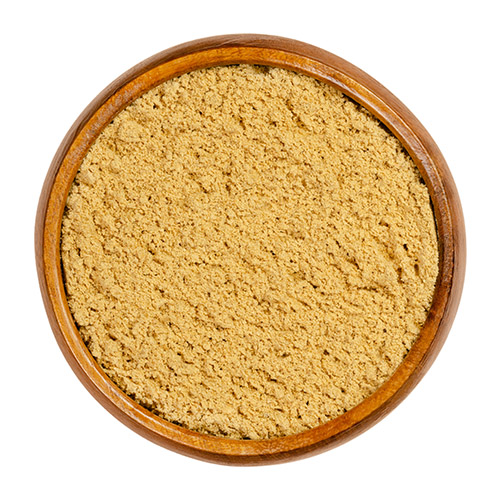
This cinnamon alternative originates in Southeast Asia and has been used for centuries in both sweet and savory dishes all over the world. It has this sweet yet almost sour, piney taste that provides a nice punch of bright heat.
Ginger has a pretty distinct flavor that’s definitely different from cinnamon. But the zesty fresh ginger root can work in a pinch in certain baked goods where you want the warmth of cinnamon. For baking, ground ginger makes an easy 1:1 substitution ratio for ground cinnamon.
The flavors aren’t identical by any means. Ginger is definitely going to stick out more than cinnamon would. But it’ll give you that signature zingy kick in place of cinnamon’s mellower, earthy flavor. It’s also a safe choice for someone with cinnamon allergies or digestive issues.
Gingerbread cookies are an obvious choice, but ginger can also work for other cakes and breads.
7. Mace
This one’s an under-the-radar substitute for ground cinnamon, but it can work well! Mace is actually related to nutmeg. It comes from the reddish covering that surrounds nutmeg seeds.
Like its nutmeg cousin, mace shares some aromatic similarities to cinnamon. It has a warm, slightly tart aroma reminiscent of cinnamon but with a more mellow, less sweet flavor profile. Mace also brings a subtle pepperiness to the table that you don’t get from cinnamon.
While not an exact flavor match, mace can make a decent substitute for cinnamon in many cookies, cakes, and breads. You can use it in an equal 1:1 ratio substitution for whatever amount of cinnamon is called for.
One thing to remember is that mace’s flavor is more delicate than punchy cinnamon. So your baked goods may not have that huge blast of warm spice you’re used to. But it can provide a nice hint of those cozy flavors when you’re all out of cinnamon.
Frequently Asked Questions
Which Cinnamon Is The Best?
There are many types of cinnamon (like True cinnamon and Chinese cinnamon), but none is the definitive best. Each variety has its own unique flavor nuances. Some are warmer and more mellow, while others pack a serious punch. It really comes down to personal preference and the specific recipe.
Can I Just Use Spice Mixtures?
Absolutely. Since cinnamon is a star ingredient in spice blends like pumpkin pie or apple pie spice, you can easily swap those in. Just check the ingredients – you may want to adjust other spices in the recipe if they overlap.
What are The Best Alternatives to Cinnamon to Mimic Its Sweetness?
To replicate cinnamon’s trademark sweetness, your best bets are nutmeg, allspice, or an overall warm spice blend. These share cinnamon’s comforting dessert vibe.
How to Use Cinnamon Substitutes to Mimic Its Spicy Flavor?
Cinnamon delivers a nice warming, almost peppery kick, too. To recreate that effect, try using powdered or fresh grated ginger root as a substitute. Its zinginess can provide a similar spicy punch.
Can I Use Brown Sugar As A Cinnamon Substitute In Baking?
I wouldn’t recommend it. Thanks to its molasses notes, brown sugar makes a fine sub for cinnamon-sugar mixtures. But on its own, it doesn’t really capture cinnamon’s distinctive flavor and warmth. The added moisture could also throw off your recipe’s texture.
How Much Ground Cinnamon Does Equal One Cinnamon Stick?
The general rule of thumb is to use around ½ teaspoon of ground cinnamon for every whole cinnamon stick your recipe calls for.
Get creative with these cinnamon substitutes and have fun putting your own spin on your favorite recipes. Go forth and bake with confidence, even without cinnamon. You’ve got this!
View More Our Common Ingredient Substitutions:
Cream and Cheese Substitutes:
- Sour Cream Substitutes
- Easy Crème Fraîche Substitutes
- Ricotta Cheese Substitutes
- Mascarpone Cheese Substitutes
- Heavy Cream Substitutes
- Eggs Substitutes
Baking Powder and Soda Substitutes:
Leavening Agents:


